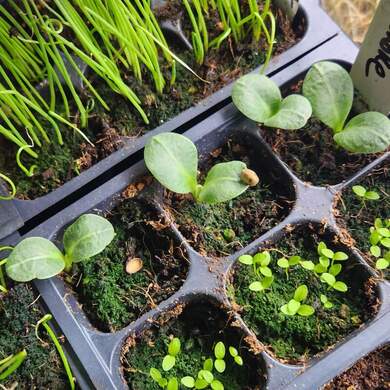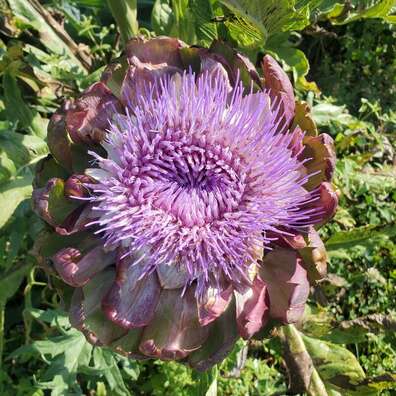Growing Artichokes in Northern ClimatesArtichokes (Cynara cardunculus variety scolymus or Cynara Scolymus) are mostly grown in California, but anyone with approximately 100 frost-free days can grow them. On the central coast of California, artichokes grow as perennials, usually the Green Globe variety. But in other parts of the country, artichokes are grown as an annual plant. Here in central Wisconsin, zone 4b I grow the Imperial Star variety, which was specifically bred to produce artichokes the first year from seed, and most years I can get a great crop before our first frost hits. Starting Artichokes from SeedArtichokes are one of the first plants I start, about 10 weeks before my average last frost date, although anytime between 8-12 weeks should work. The seeds are relatively large and tough and can take up to 3 weeks to germinate. They germinate best with a heat mat but if you have a warm room (70-80°F) a heat mat is not necessary. Artichokes have a taproot so if you start them in a small 6-cell tray you want to transplant them into a larger pot when they are still small. To get good flower bud production (the part you eat) they need 10 days of colder temperatures in the 40s while they are still seedlings. I move mine outdoors as soon as possible to achieve these temperatures but bring them in at night if it is going to dip below 40 and I have never had a problem with them forming buds. Growing ArtichokesTransplant your seedlings after the danger of frost has passed or protect them from frost with a frost cover. They get very large, roughly 3 feet across, so plan on lots of room for them to grow. They also like very fertile soil, especially high levels of nitrogen. You can use compost, blood meal, composted manure, or fish emulsion. I try to fertilize monthly but if your soil is poor an application every 2 weeks may be better. Artichokes need plenty of water once they start producing flower buds. I keep my plants mulched with either leaves, cardboard, straw, or wood chips. This keeps moisture in the soil and reduces weed pressure. We also use drip tape throughout our garden to keep the soil moist without overwatering. Wood chips can reduce nitrogen levels at the soil surface or throughout the soil if you till them in at the end of the season. We have healthy soil and add compost and composted manure every year, so we see no decline in growth. However, we do not use wood chips around young seedlings with shallower root growth. HarvestingWhen the flower buds are large, but the bracts are not fully open you can cut the artichokes off the plant at their base to harvest them. The main bud will mature first and then several side buds will form. You can also allow some buds to flower; they turn into a beautiful purple flower that looks like a thistle flower which makes sense since the genus Cynara consists of thistle-type plants. Eating ArtichokesMy favorite way to eat artichokes is to steam them for approximately 45 minutes. The smaller side shoot ones can be cooked for less time. Then remove the leaves individually and eat the fleshy base until you get to the center, heart of the artichoke. The inedible, woody, spiny choke on top of the heart is removed and then the heart can be eaten. I like to eat the fleshy part of the leaves and the heart with garlic-herb goat cheese but there are lots of other ways to eat artichokes. ConclusionI was very intimidated to grow artichokes for the first time as I, like many people, thought artichokes could not be grown in northern climates. However, artichokes are one of the easiest vegetables to grow in the garden. Once planted, they are very low maintenance, and due to their spiky, thistle-like growth are deer and rabbit-resistant. I have also never had any insect damage, making them one of the easiest plants to grow. References
0 Comments
|
Details
AuthorIn 2016, my family and I moved from the New York City area to small town Wisconsin. Our move, this website and blog (and our previous Etsy store) is the result of our desire over the past several years to simplify our lives, increase our quality of life, reconnect with nature, and enjoy a more self-sufficient life. I grew up as a country kid in central Pennsylvania working on my grandfather's fruit farm and as a corn "de-tassler" at a local seed farm. My background is in biology where my love of nature originated. I am a former research scientist and professor and have now transitioned to a part-time stay-at-home mom, self-employed tutor, and small business owner. Thank you for taking the time to check out my site. Archives
April 2024
Categories
All
|





 RSS Feed
RSS Feed